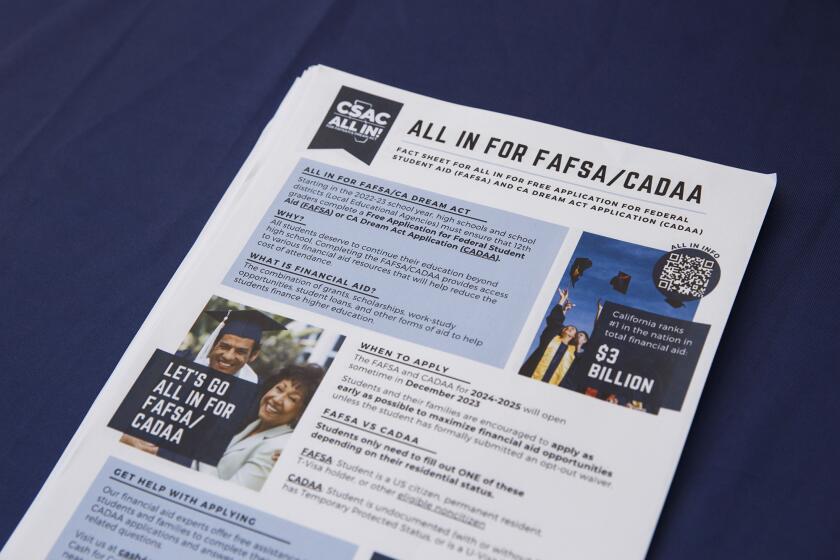New Decade Is When Bills Will Come Due
As many observers have noted, the 1980s were the decade when San Diego emerged as a major urban center, with a full range of big-city problems. But dealing with those problems was significantly hampered by tight government budgets brought about by Proposition 13 and cutbacks in federal programs during the Reagan Administration. So the 1990s are the decade when many bills will come due.
Some have already started being paid.
Developers are paying for many more services, such as roads, schools and parks, that were once paid for by the taxpayer. Those fees, in large measure, are passed on to home buyers.
San Diegans also voted to increase the sales tax from 6% to 7% during the 1980s to improve roads and public transportation and jails and courts, although the latter increase is tied up in court.
But more big-ticket items are on the way.
In the early part of 1990, the San Diego City Council will work out the final details of the Housing Trust Fund it approved this month. As it stands, $54 million a year in new taxes and fees would be dedicated to building and subsidizing affordable housing for poor and working-class people making $18,700 a year or less for a family of four. The Housing Commission estimates that individuals would contribute up to $44 a year in fees to the fund, with the rest coming from commercial-development fees and taxes on businesses and hotel rooms.
The affordability of housing is a problem that will have to be addressed throughout the county if employers are to continue attracting workers, and the city’s Housing Trust Fund is a good way to start.
But the amount and types of user fees and taxes that local government wants to levy require more debate because, also in early 1990, the council will be considering how to raise money for more than $1.5 billion in other public needs, such as more police, parks, road improvements and a new library.
Unfortunately, some council members who are attempting to get the trust fund reconsidered are using rhetoric that will only whip up an anti-tax, anti-government sentiment that might undermine the whole public-financing effort.
San Diegans heard much about water and sewers in the ‘80s and started paying higher rates to renovate an aged and neglected sewer system. In the 1990s and the early part of the next century, as San Diego moves to water reclamation and upgrades its sewage treatment to meet federal standards, sewer and water bills will continue to rise. One report estimates that monthly bills will go up another $15 to $20 through 1995.
One observer quipped that the nearly $3 billion that the system is expected to cost over the next 15 to 20 years is a lot of money “just to flush the toilet.” But he forgets that most of that money will go for water reclamation. Since San Diego imports 90% of its water, and is at the end of Southern California’s water pipeline, the investment is well worth it.
Health and social services are also woefully under-funded. Prenatal care and drug-abuse treatment are just two areas desperately in need of funds. And in both cases, a dollar spent helps prevent other social and health problems.
The county has sued the state because it receives less money per capita for some health services than almost any other county in California. A resolution of that suit in the 1990s would greatly improve health and social services here, without having to add more local taxes.
A lawsuit filed in San Diego this year (involving a La Jolla property) challenges the constitutionality of Proposition 13 and could, of course, eventually change the public-finance picture. But many of these problems and financial needs won’t wait.
Elected officials here, as elsewhere, have tried to stay clear of taxes, knowing that none of us wants to pay more.
But San Diego, and the state, cannot afford to put off paying the bills any longer. The welfare of the whole community requires that these problems be addressed.
More to Read
Sign up for Essential California
The most important California stories and recommendations in your inbox every morning.
You may occasionally receive promotional content from the Los Angeles Times.










